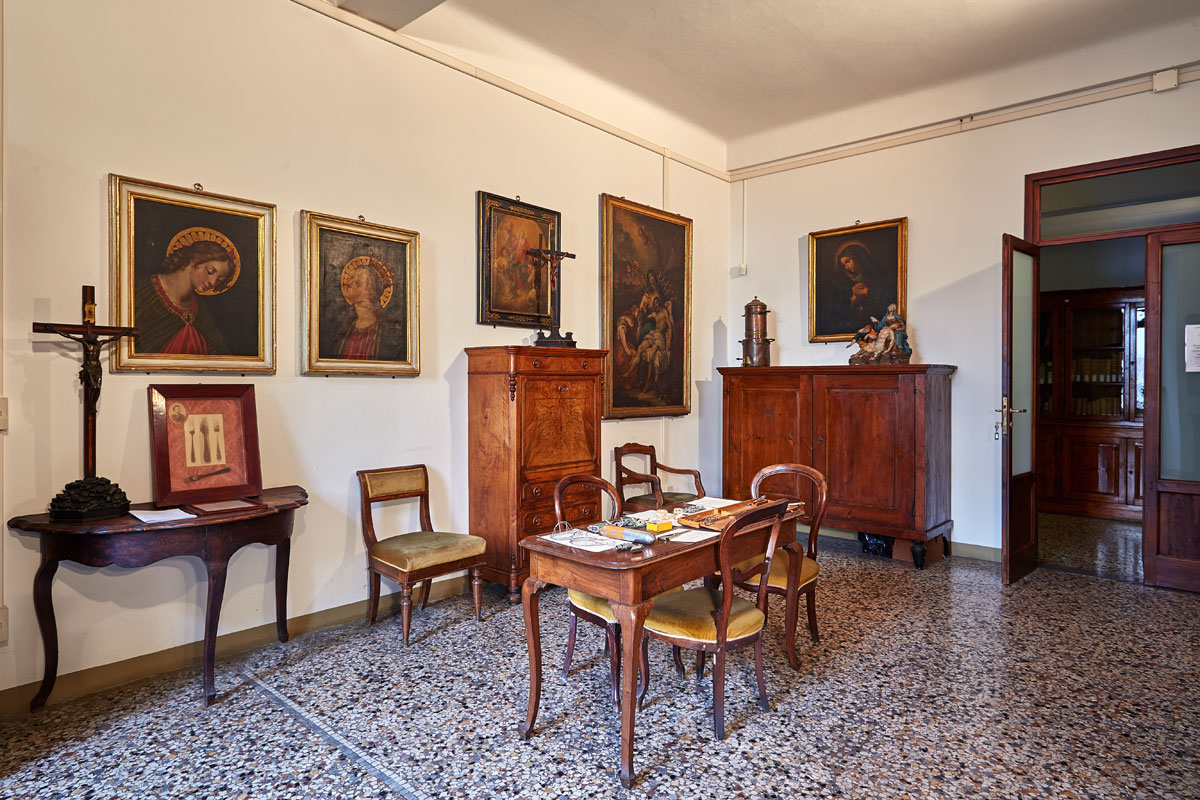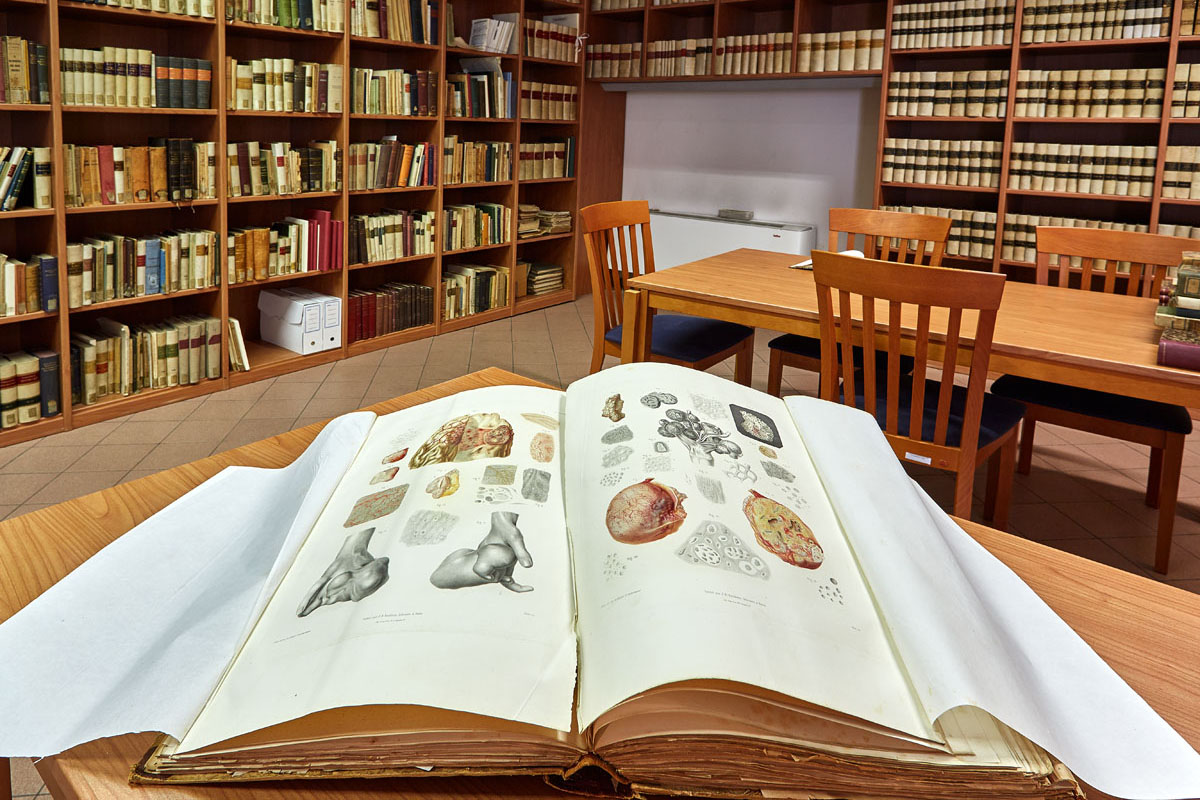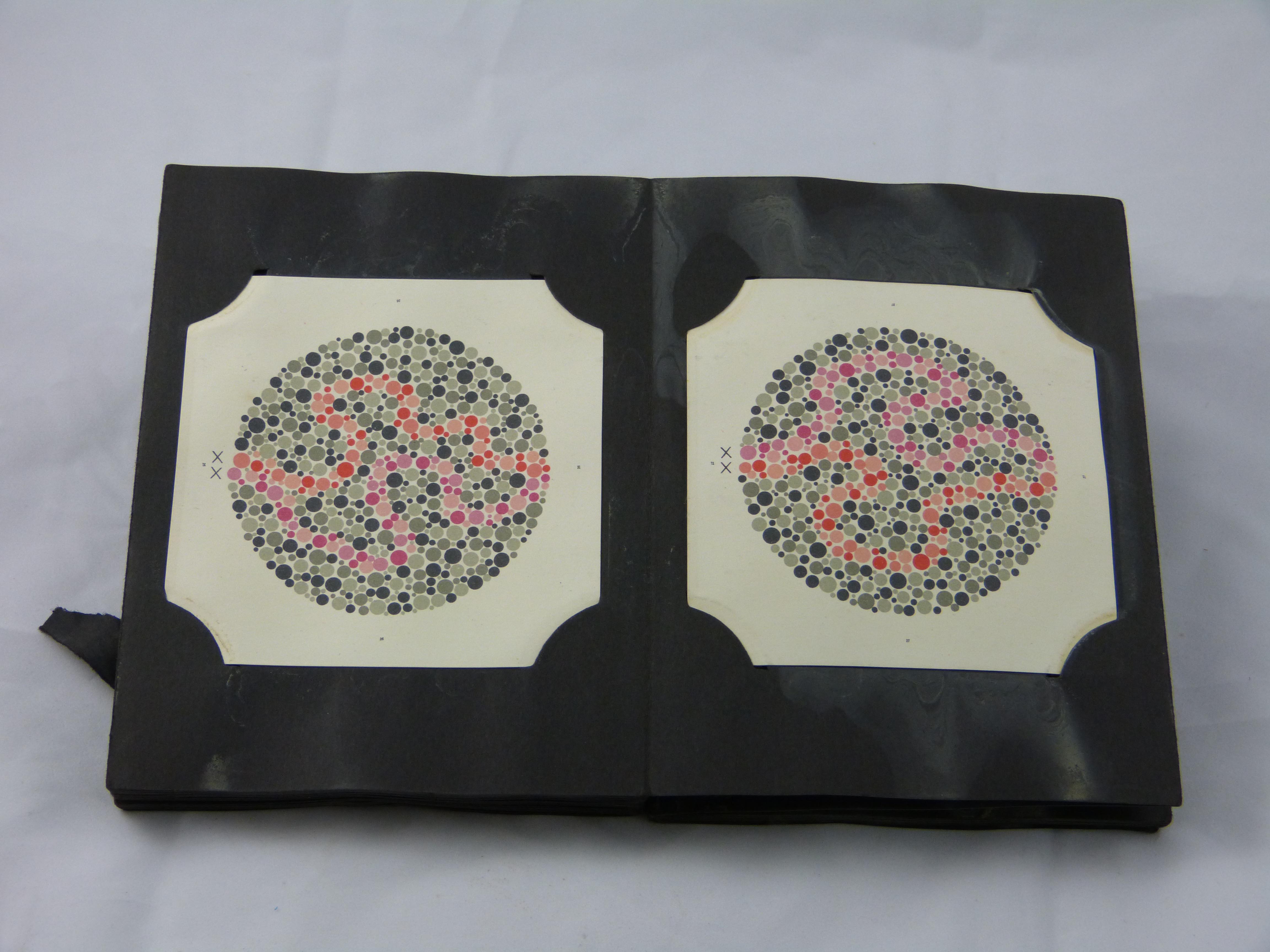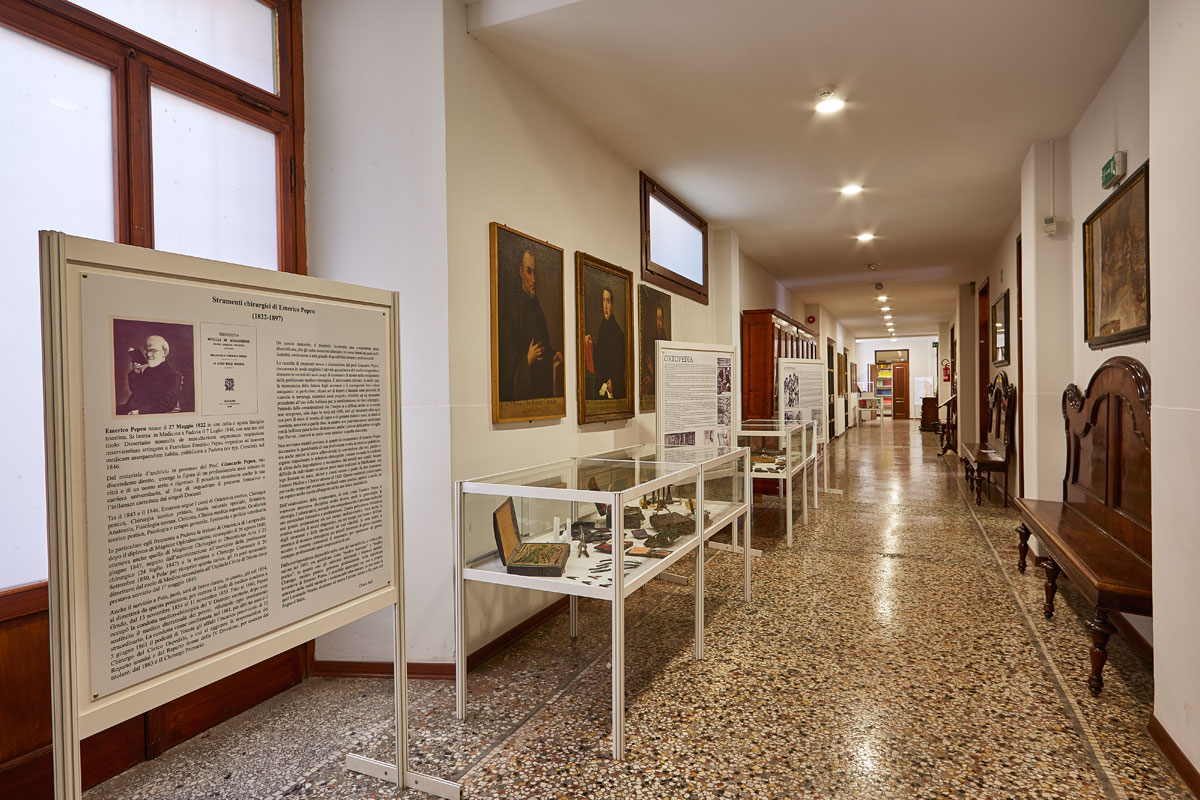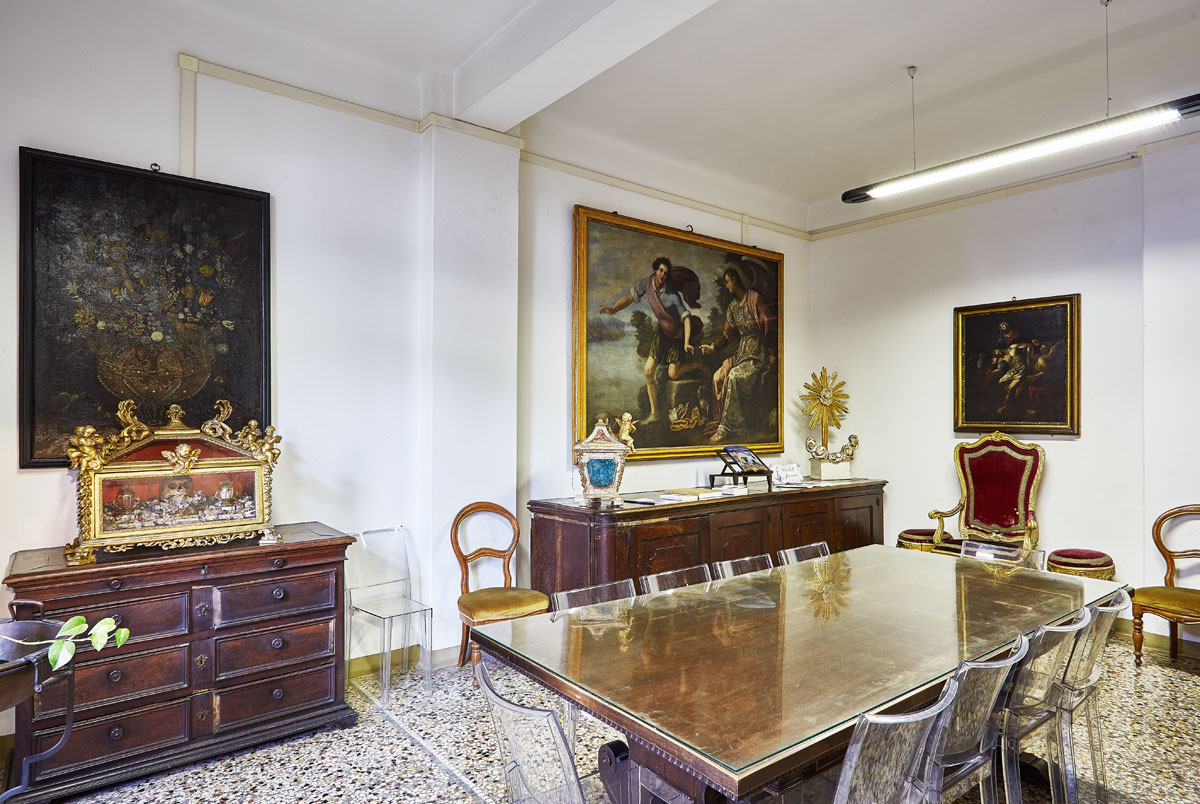The headquarters of the Centre of Documentation are situated in the monumental rooms on the first floor of the former hospital of San Giovanni di Dio. Formerly the small hospital of Santa Maria dell’Umiltà, founded by Simone Vespucci in 1380, it became the residence of the friars from the Hospitaller Order of San Giovanni di Dio in as early as 1588. These friars were better known as the Fatebenefratelli or Friars of the Sporta, because of their practice of begging for money and offers in kind in the city streets. The hospital's history dates from this time and the friars continued to care for the sick until the order was suppressed in 1866. The activity of the hospital however survived without interruption until 1983, when the health services were transferred to the 'new' Hospital of San Giovanni di Dio at Torregalli, though the day hospital and social health services remained in the Borgognissanti buildings until the year 2000.
The Centre also hosts furnishings and many of the original artistic works surviving from the old hospital, Church and Convent of San Giovanni di Dio after the original fourteenth century complex was renovated and enlarged in 1635-1703 and 1730-1755. The twenty-eight 'headboards' (small oil paintings of floral subjects, which were placed above the bed heads of the sick) are particularly interesting as they are attributed to the workshop of Bartolomeo Bimbi (1648-1730). Other works have been attributed to Giovan Battista Lenardi, Alessandro Gherardini, Giovanni Antonio Noferi, Joseph Dorffmeister, all artists who were linked to the court and eighteenth century Florentine nobility. The ceilings of the great hospital entrance hall are frescoed with Jesus healing a paralysed man at the pool of Bethsaida, by Vincent and Rinaldo Botti (ca. 1735), while Carlo Marcellini (1643- 1713) carried out most of the architectural structure of the church and the hall itself.
Since 2001 the exhibition of art works has also been accompanied by a collection of historical and medical instruments, thanks to some donations made by doctors after retiring from the profession. The importance of preserving instruments that might otherwise have easily been destroyed, along with all the data regarding their functions, together with the need to resolve what was becoming a problem for the hospitals, which otherwise had to preserve this material in suitable places that had little or nothing to do with their primary health purposes, led the Documentation Centre to take over the conservation of those instruments – now unused because of the changing times, technical or medical progress, or simply important because of the illustrious name of the specialist who used them, though still significant as a 'heritage of health' – because it realises that they must be protected and promoted in the same way as any other historic artistic asset or library. The different origins of the items in the corpus have meant that it includes a great many specialised sections that are not always fully represented, but which – in spite of being incomplete – can be of interest to many, especially in the world of education.
The Centre also hosts furnishings and many of the original artistic works surviving from the old hospital, Church and Convent of San Giovanni di Dio after the original fourteenth century complex was renovated and enlarged in 1635-1703 and 1730-1755. The twenty-eight 'headboards' (small oil paintings of floral subjects, which were placed above the bed heads of the sick) are particularly interesting as they are attributed to the workshop of Bartolomeo Bimbi (1648-1730). Other works have been attributed to Giovan Battista Lenardi, Alessandro Gherardini, Giovanni Antonio Noferi, Joseph Dorffmeister, all artists who were linked to the court and eighteenth century Florentine nobility. The ceilings of the great hospital entrance hall are frescoed with Jesus healing a paralysed man at the pool of Bethsaida, by Vincent and Rinaldo Botti (ca. 1735), while Carlo Marcellini (1643- 1713) carried out most of the architectural structure of the church and the hall itself.
Since 2001 the exhibition of art works has also been accompanied by a collection of historical and medical instruments, thanks to some donations made by doctors after retiring from the profession. The importance of preserving instruments that might otherwise have easily been destroyed, along with all the data regarding their functions, together with the need to resolve what was becoming a problem for the hospitals, which otherwise had to preserve this material in suitable places that had little or nothing to do with their primary health purposes, led the Documentation Centre to take over the conservation of those instruments – now unused because of the changing times, technical or medical progress, or simply important because of the illustrious name of the specialist who used them, though still significant as a 'heritage of health' – because it realises that they must be protected and promoted in the same way as any other historic artistic asset or library. The different origins of the items in the corpus have meant that it includes a great many specialised sections that are not always fully represented, but which – in spite of being incomplete – can be of interest to many, especially in the world of education.
The collection consists of about 300 exhibits (not including the series) that are the expression of the various specialised branches of medicine. The most significant and numerous exhibits come from the following disciplines: Urology, one of the richest sections, with examples of instruments related mainly to the extraction of bladder stones and datable from the late 19th century to the 1960's; Ophthalmology, with diagnostic instruments dating from the 1950's and 60's; Obstetrics and Gynaecology, with instruments from the early 1970's; Dentistry with the complete equipment from a dental studio of the 1950's; Gastroenterology, instruments for the diagnosis and extraction of oesophageal bladder stones, from the 1950's and 60's; Cardiology with a heart / lung machine for open-heart surgery, constructed in the Hospital of S. Giovanni di Dio in 1960; Anaesthesiology, from the Esmarch masks used in the 1940's, to the machines for anaesthesia of the 1980's; the vast corpus of 'recent' Occupational Medicine and lastly, a vast assortment of Instruments for First Aid, composed above all of scalpels, scissors, forceps, suture needles, cauteries, etc., datable between the early 20th century and the 1980's and 1990's.

